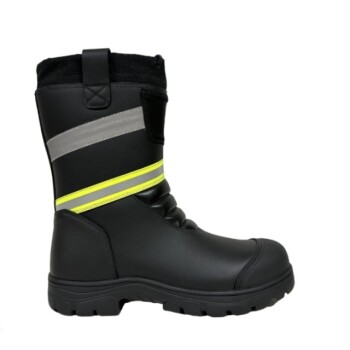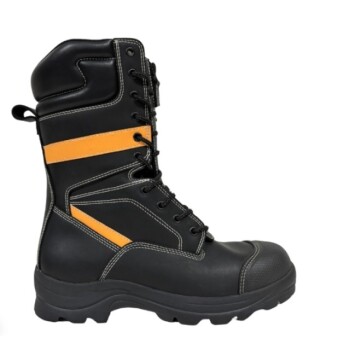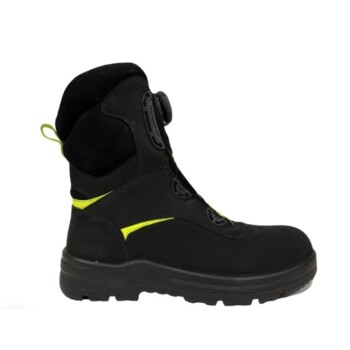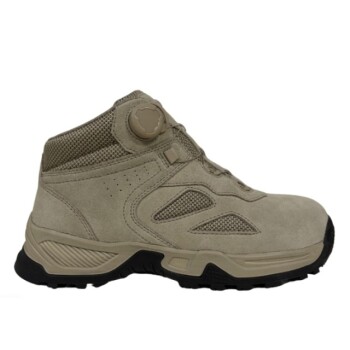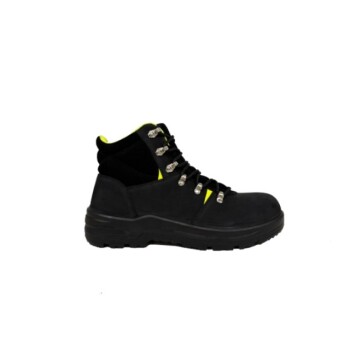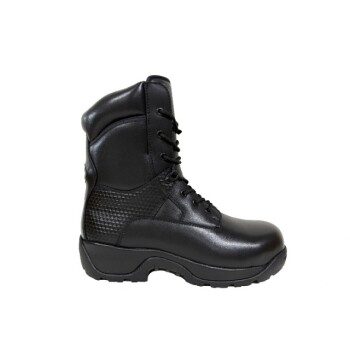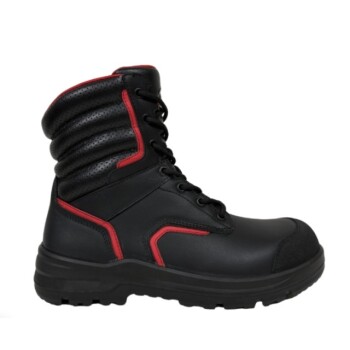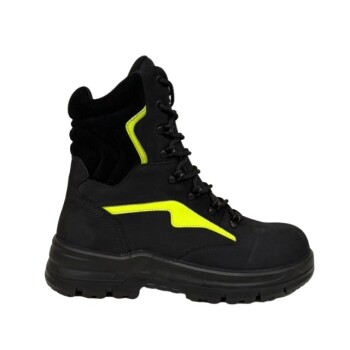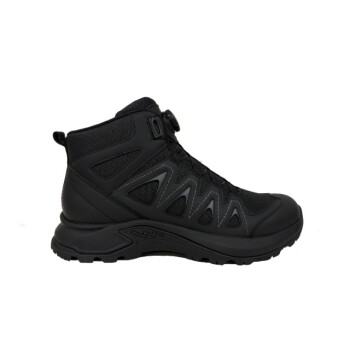Yes, moc toe boots can be safety boots, but the style itself does not guarantee protection. A moc toe can be a certified safety boot only if it is constructed with specific protective features, such as a reinforced steel or composite toe cap, and meets official safety standards for the workplace.
The term "moc toe" refers to a boot's U-shaped stitching pattern, which is a matter of style and construction. Whether that boot qualifies as a "safety boot" depends entirely on functional additions like protective toe caps and certified outsoles, which must be verified for your specific work environment.
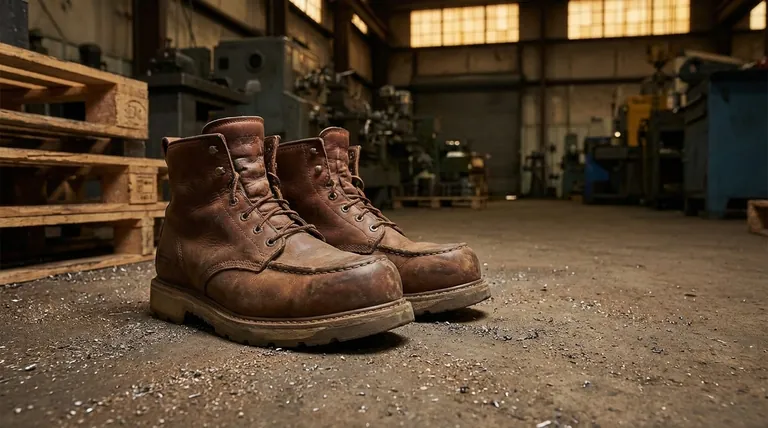
What Defines a Moc Toe Boot?
A Matter of Construction and Style
The "moc toe" design is defined by a distinct U-shaped seam stitched across the top of the toe box. This construction is inspired by the moccasins worn by North American indigenous peoples.
This design creates a more spacious, box-like area for your toes, which many find more comfortable for long periods of standing or walking. It is a classic, popular style, but the stitching itself offers no inherent safety protection.
Integrating Safety Features into the Style
The Critical Safety Toe
For a moc toe boot to be considered a true safety boot, it must include a protective toe cap. These are designed to protect the foot from impact and compression hazards.
Manufacturers commonly integrate steel toes or composite toes into the moc toe design without compromising its signature look.
Beyond Impact Protection
Modern moc toe safety boots often include a range of other protective elements to meet various job site requirements.
These can include slip-resistant outsoles for traction on wet or slick surfaces, oil-resistant materials that prevent the sole from degrading, and Electrical Hazard (EH) resistance to protect against accidental contact with live electrical circuits.
Understanding the Trade-offs and Limitations
The Metatarsal Guard Exception
The primary limitation of the moc toe style in a safety context is its general incompatibility with metatarsal guards.
Metatarsal guards are shields that protect the top of the foot—the delicate metatarsal bones—from heavy impact. This level of protection is crucial in fields like welding or foundries. The construction of a moc toe boot does not typically accommodate this external or internal shield, which is why boots with metatarsal guards are almost always a standard round-toe design.
Verifying Certification is Non-Negotiable
You can never assume a boot is a safety boot based on its appearance. Always check the tag or product description for its official safety rating, such as an ASTM (American Society for Testing and Materials) certification, which validates its protective capabilities.
Making the Right Choice for Your Goal
To determine if a moc toe safety boot is right for you, analyze the specific hazards of your job.
- If your primary focus is general trades, construction, or factory work: A certified moc toe with a steel or composite toe and EH resistance is often a perfect blend of comfort and protection.
- If your primary focus is working on slick surfaces like kitchens or machine shops: Prioritize a moc toe safety boot with a certified slip-resistant and oil-resistant outsole.
- If your primary focus is heavy industry with risks of falling objects: The moc toe style is likely insufficient, and you should choose a safety boot with an integrated metatarsal guard.
Ultimately, selecting the right boot means matching its specific, certified safety features to the known hazards of your work.
Summary Table:
| Feature | Standard Moc Toe Boot | Moc Toe Safety Boot |
|---|---|---|
| Primary Characteristic | U-shaped toe stitching (style) | U-shaped toe stitching + protective features |
| Toe Protection | None | ASTM-certified steel or composite toe cap |
| Slip/Oil Resistance | Not guaranteed | Certified slip-resistant & oil-resistant outsole |
| Electrical Hazard (EH) | Not guaranteed | EH-rated for protection against live circuits |
| Metatarsal Guard | Not compatible | Generally not compatible; requires a different style |
| Best For | Casual wear, light work | Construction, factories, kitchens, general trades |
Need Durable, Certified Moc Toe Safety Boots for Your Team?
As a large-scale manufacturer, 3515 produces a comprehensive range of safety footwear for distributors, brand owners, and bulk clients. We combine the classic comfort of the moc toe design with the critical safety features your workforce needs, including ASTM-certified steel/composite toes and slip-resistant outsoles.
Let us help you equip your team with reliable, compliant footwear.
Contact our experts today for a custom quote and to discuss your specific requirements!
Visual Guide
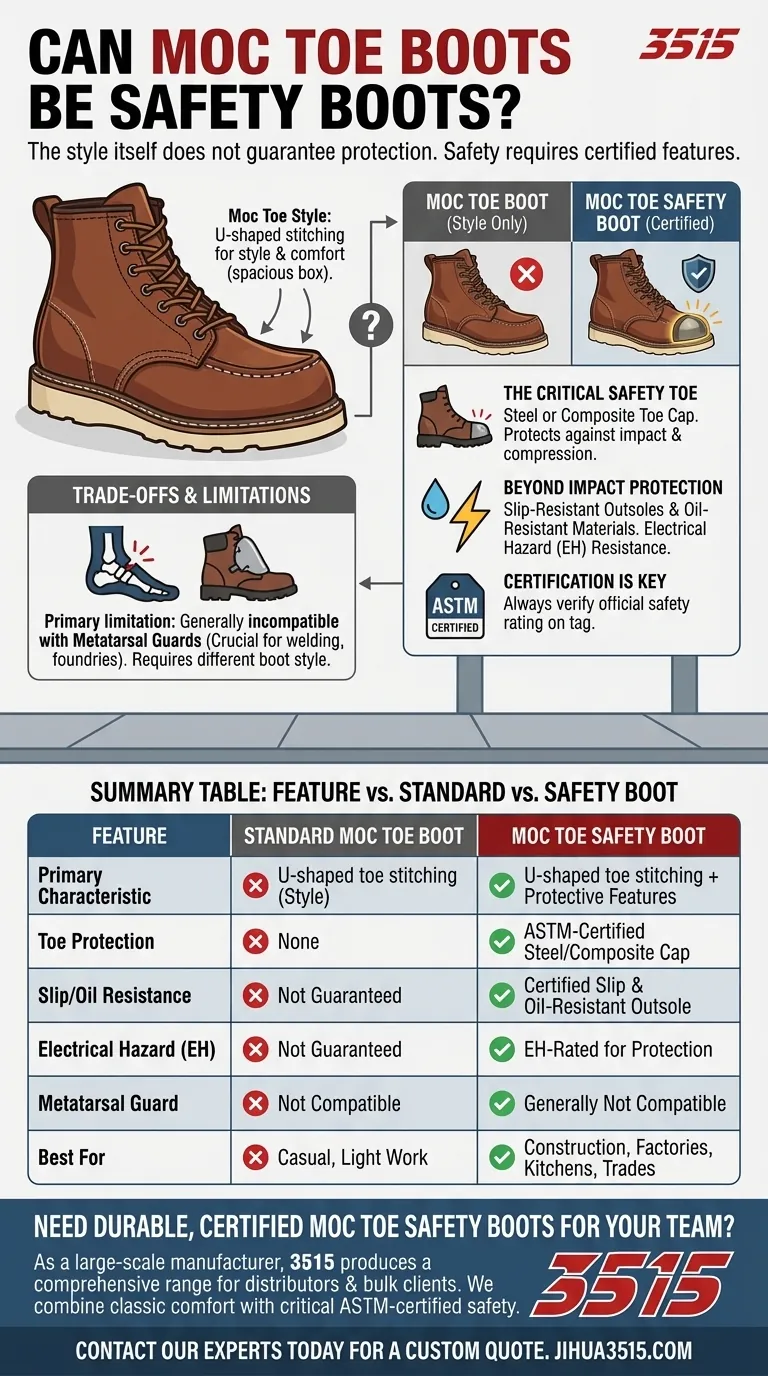
Related Products
- Safety Footwear Wholesale Manufacturer for Custom OEM/ODM Production
- Wholesale Safety Footwear Manufacturer for Bulk & Custom OEM Orders
- Wholesale Durable Safety Boots Manufacturer Customizable Steel Toe Work Boots
- High Performance Fire-Retardant Waterproof Safety Boots
- Premium Flame-Retardant Waterproof Safety Boots and Shoes
People Also Ask
- Is safety-toe as good as steel toe? Choose the Right Protection for Your Job
- What cultural and environmental considerations are tied to wearing shoes indoors? Balance Hygiene, Tradition, and Foot Health
- Is it normal to wear shoes in the house? A Guide to Hygiene, Comfort & Culture
- Do snake bite boots work? Your Ultimate Guide to Effective Snake Bite Protection
- How do safety shoes contribute to cost savings for companies? A Strategic Investment in Risk and Cost Management



